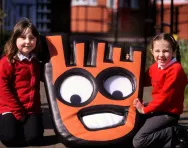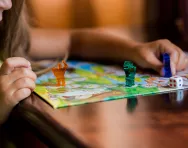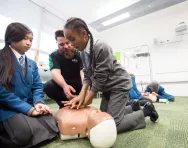TheSchoolRun.com closure date
As we informed you a few months ago, TheSchoolRun has had to make the difficult decision to close due to financial pressures and the company has now ceased trading. We had hoped to keep our content available through a partnership with another educational provider, but this provider has since withdrawn from the agreement.
As a result, we now have to permanently close TheSchoolRun.com. However, to give subscribers time to download any content they’d like to keep, we will keep the website open until 31st July 2025. After this date, the site will be taken down and there will be no further access to any resources. We strongly encourage you to download and save any resources you think you may want to use in the future.
In particular, we suggest downloading:
- Learning packs
- All the worksheets from the 11+ programme, if you are following this with your child
- Complete Learning Journey programmes (the packs below include all 40 worksheets for each programme)
You should already have received 16 primary school eBooks (worth £108.84) to download and keep. If you haven’t received these, please contact us at [email protected] before 31st July 2025, and we will send them to you.
We are very sorry that there is no way to continue offering access to resources and sincerely apologise for the inconvenience caused.
Family fireworks safety
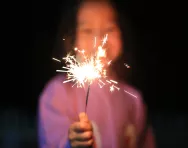
We long for a little magic and sparkle on long dark nights. But if you can't attend community celebrations and organised fireworks events, parents may feel under pressure to provide the magic for the kids themselves on Bonfire Night / Guy Fawkes, at Diwali, on New Year's Eve and at Chinese New Year.
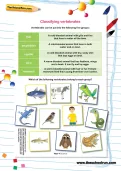

Download fantastic science resources today!
- Experiments And Science Fun pack
- Science Learning Programme for each school year
- All the instructions, questions and information you need
If you're considering organising small-scale fireworks in your own garden, this is the expert advice to follow to keep yourself and your family safe.
If I can buy it, it must be safe…?
Buying fireworks can be a minefield, even for the most pyrotechnically-minded. They come in different categories depending on how hazardous they are, how loud, how long a fuse delay they have and how much distance you need to leave for standing and for debris. They range from category 1 to 3 for non-professional use plus category 4 for professional use only.
Unfortunately, category 4 fireworks may find their way into the hands of unsuspecting consumers via pop-up shops and online marketplaces.
These category 4 fireworks are far too dangerous to use in the back garden – as well as being illegal to sell to consumers. What’s more, even category 3 fireworks require at least 25 meters viewing distance and are intended for large displays – not your standard family back garden!
Tips for buying fireworks safely
It’s easy to be seduced by heavily-discounted fireworks when you’re on an ever-tightening budget. Our advice for picking a safer way through the dizzying array of fireworks to buy is:
- Go to reputable retailers and avoid pop-up shops and temporary / unlicensed market stalls.
- Only buy fireworks marked with British safety standards (EN 15947 or BS 7114). This should be written on the box.
- When buying online, look for companies who offer helpful advice about what category of firework to buy. If the seller doesn’t list fireworks categories, don't buy from them and find a retailer who does.
- Take care buying from online marketplaces. Contrary to what many of us think, they are not responsible for the safety of the products they sell.
- Category 2 fireworks are the safest for normal family back gardens, so look out for these.
Firework-free fun for families
It’s quite possible to enjoy Bonfire Night and other autumn and winter celebrations without resorting to running up and down the garden with your heart in your mouth trying to light fireworks. Here are some ideas to make your cold-weather get-togethers a really good night to remember:
- Bring back some of the foodie delights from your childhood – toffee apples, honeycomb and Parkin cake to name but a few. You could dip breadsticks in melted chocolate and sprinkles for your own edible fireworks, or get the BBQ out for hot dogs and marshmallows, rinsed down with hot chocolate. And don’t forget the jacket potatoes in tin foil!
- Why not go old-school with apple bobbing? It's one of the oldest Bonfire Night traditions and it couldn’t be simpler to do. Just fill a basin with water (remember that very young children should never be left unsupervised around water) and throw in some apples. Then grab an apple out with just your teeth (spoiler alert: leave the stalks on to make it a bit easier for the littlies!). Get the kids to ask grandparents what games they used to play and bring them back to life with your family.
- Put the Guy back into Guy Fawkes Night – you might not be burning him on a massive bonfire, but you can have fun with the kids making your own Guy with old clothes and stuffing him with paper. Tell them the Guy Fawkes story as you stuff!
- Get creative with the kids – splashes of paint on black paper make a beautiful fireworks display, or paint toilet roll tubes and use orange or yellow tissue paper for the rocket.
- When everyone gets too cold or too tired, cuddle up on the sofa, turn off the lights and watch spectacular fireworks displays online – you can find loads on YouTube. Or look for drone "fireworks" displays, which are absolutely amazing!
Essential safety tips for at-home firework displays
If you are sure you want to do it yourself this year, here are some essential safety tips:
- Children need careful supervision. Have a marker (like a rope) for the children to stand behind at a safe distance from the display.
- Store fireworks in a metal box until you are ready to use them.
- Use a torch – rather than a naked flame – to read the instructions.
- To light a firework, hold it at arm’s length and light it with a taper or firework lighter.
- Never go back to a firework once it has been lit. Sometimes they can be very slow to get started and may take you by surprise.
- It’s best to be fully in control when you’re lighting fireworks. One person should be responsible for the display and avoiding alcohol until you’ve set them all off is the safest option.
- Never throw spent fireworks onto a bonfire.
- The safest place for a bonfire is at least 18 metres (60 ft) away from the house and surrounding trees and hedges, fences or sheds.
- If sparklers are part of your staple, it’s best to wear gloves and have a bucket of water handy for spent sparklers, so no-one is tempted to pick up a used one. Children under five are too young to handle sparklers themselves.
- When you’re clearing up spent fireworks after the display, make sure anyone who is helping uses tongs or gloves to avoid burning themselves.
Find more firework safety advice for families on the Child Accident Prevention Trust website and follow the Child Accident Prevention Trust on Facebook for regular safety tips and updates.
